Notes On A Napkin
Checking In
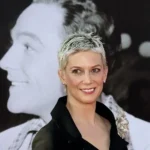
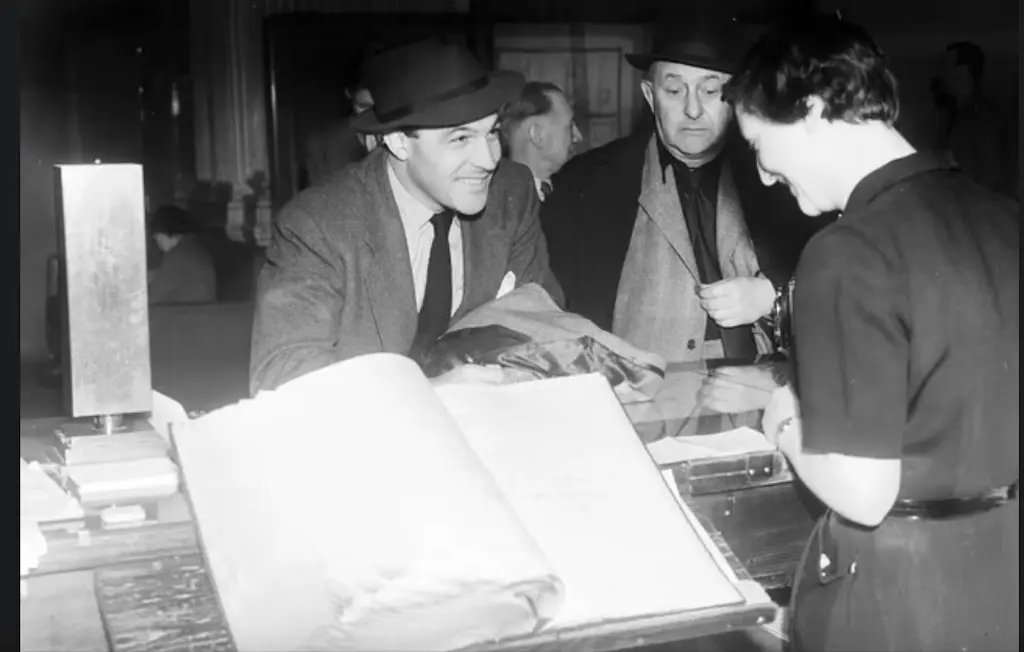

I think you'll enjoy this! It is a photo of Gene and producer Arthur Freed checking in to the Caledonian Hotel in Edinburgh in April 1953. They took the night train from London and were in Scotland to scout locations for Brigadoon. Sadly, shooting on location did not come to pass, due to weather and budget. But I love that he was there, meeting folks, seeing dance. He loved every minute of it. And, charmer that he was, he knew how to lean in with that smile, didn't he? The thing is, it wasn't fake. It was genuine. I think that's one of the reasons it is so appealing.
The Black Arrow

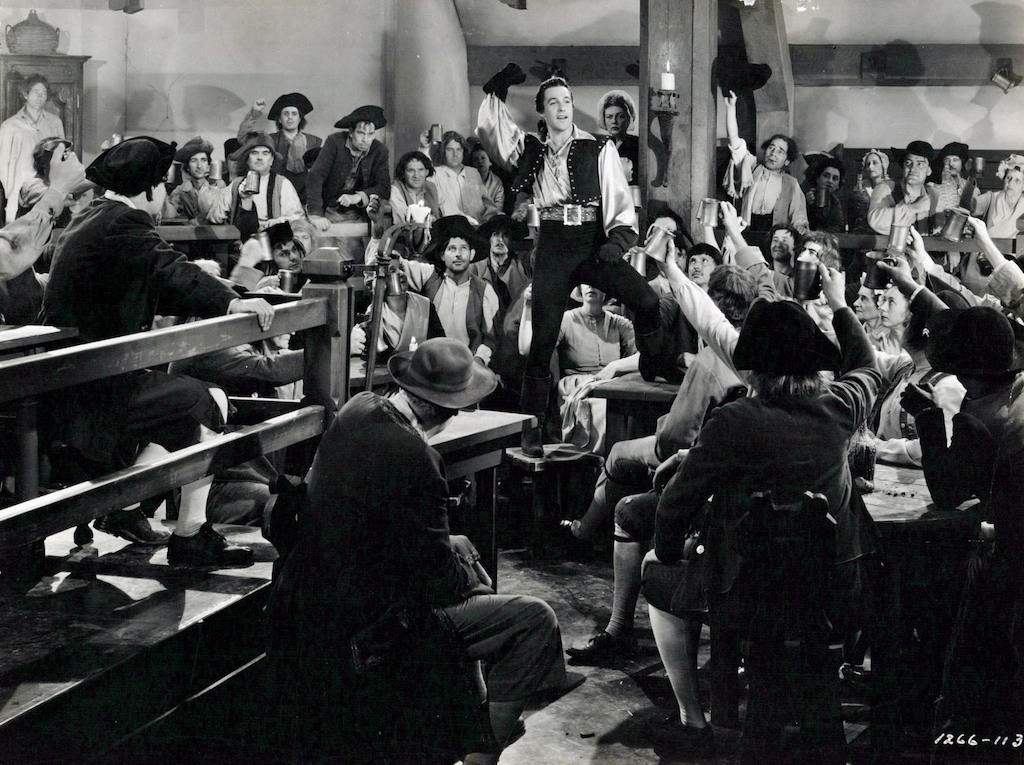

You might not have seen this photo before. It is Gene as the "Black Arrow" in Dubarry Was a Lady (1943). The snipe on the back reads: "REVOLUTIONARY RALLY...Gene Kelly leads a gang of cutpurses in a display of vengeance against King Louis XV." Gene's first agent in New York thought Gene's name was too Irish and wanted him to change it to Frank Black. Had Gene done it, you would have had Frank Black in The Black Hand; Frank Black as the Black Arrow; Frank Black as Mack the Black Macoco. You get the drift.
In Flight

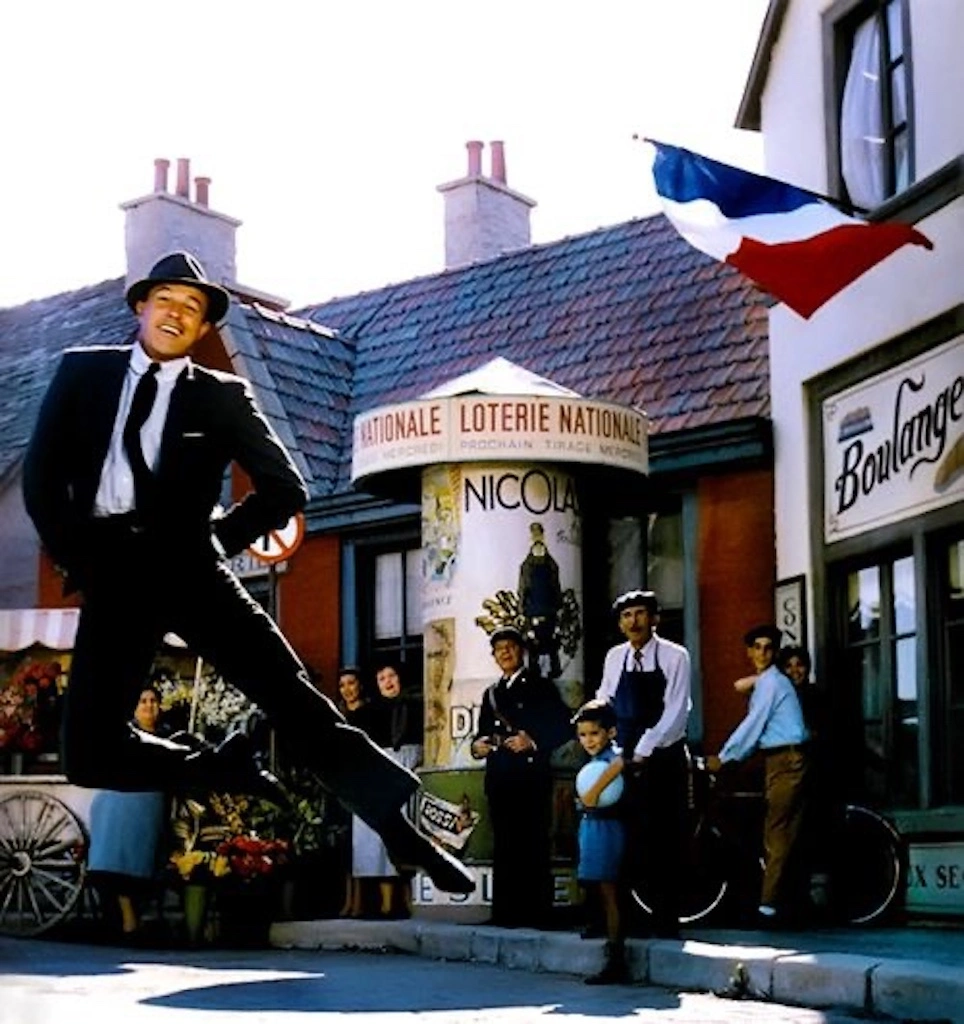

This photo was shot by Gene's friend, the photographer Milton Greene, for an Air France ad campaign. Some of you might think this is Paris. Others of you will recognize this location from the old M-G-M lot.
A Spritely Gob

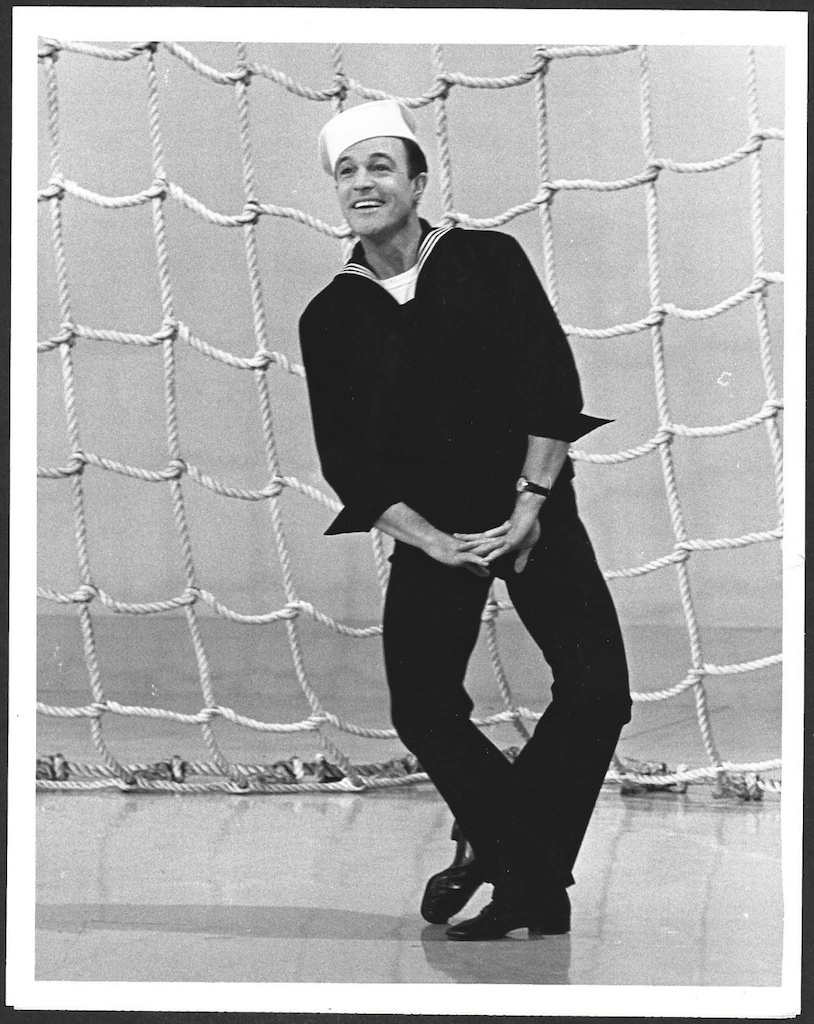

Gene is referred to as a "Spritely Gob" in the snipe on the back of this photo showing Gene performing "Bell Bottom Trousers" when he appeared as a guest on The Julie Andrews Show in 1965. The song is a re-working of a bawdy sea song titled "The Servant of Rosemary Lane." A cleaner version was written in 1944 by bandleader Moe Jaffe and became popular during World War II. In 1945, it was recorded by Tony Pastor's orchestra, Kay Kyser's, Guy Lombardo's, Jerry Colonna, Louis Prima orchestra, and more, with the recordings topping the charts for weeks. The chorus for this version: "Singing bell bottom trousers,/ Coats of navy-blue./ Let him climb the rigging/ Like his daddy used to do." A pretty charming gob, I'd say.
Small World



Here's a photo of Gene rehearsing his Spanish dance in the Pontiac TV Special he did with Carol Lawrence and Donald O'Connor in 1959. The image is by Tony Karp who worked as a still photographer from 1959 to 1962, with many of his assignments for NBC-TV. Over fifty years ago, he designed and built the computer-controlled zoom lens that was used to shoot the opening scene of The Godfather (1972). According to Karp, "This was the first piece of computer-controlled equipment used in the making of a major motion picture. The computer interface made it possible for the director or cameraman to easily set up a zoom by dialing the start, the finish, and how long the zoom should take. The zoom was repeatable, which made multiple takes easy. Unlike other zoom controls available at the time, it had no low-speed limit. This made it possible to have the three-minute zoom used to shoot the opening scene of The Godfather." Small world, isn't it. I bet you want to re-watch that opening scene now, don't you!
Unmistakable Yet Again!

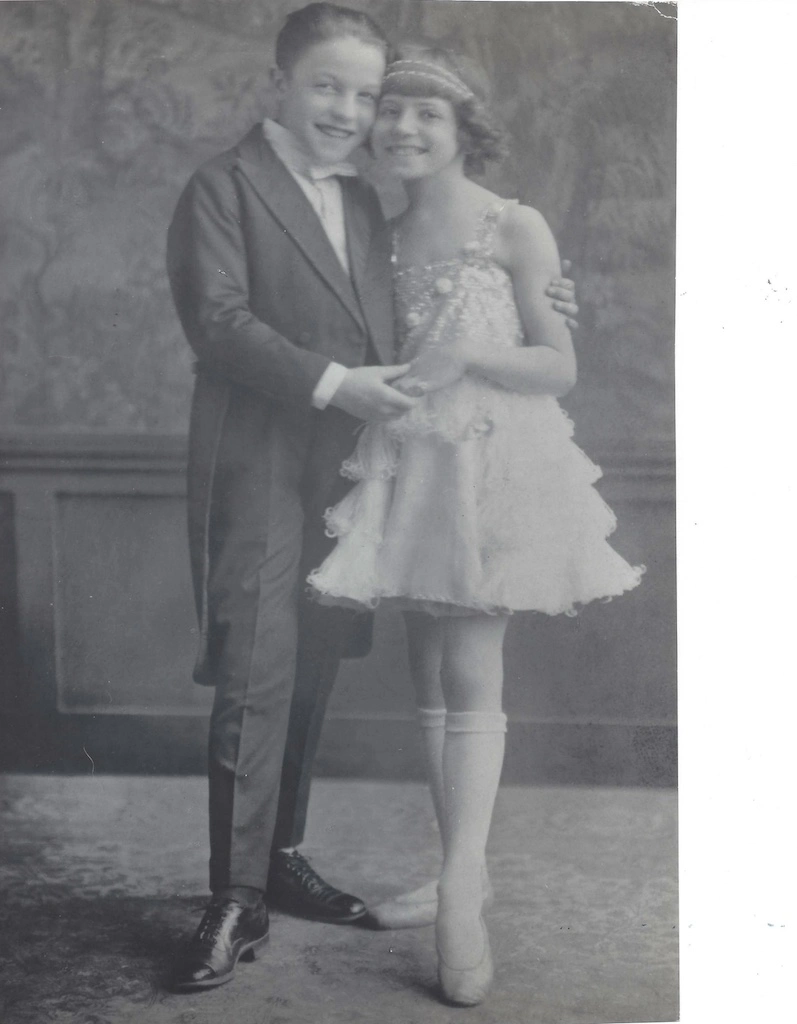

Well, there he is! Unmistakable yet again. Gene's handwritten note on the back of this photo reads: "Dancing with a young partner at a school entertainment - Age 10 - Girl is Claire Cupps." It is amazing to see that he is all there in that 10-year-old smile. White tie and tails—the very thing he worked to escape from years later. With an aversion to the rich who populated Pittsburgh and Johnstown, Gene said he wanted to "dance like the common man" and to create a style of dance that represented the American male. As I've said before, he based that style on the type of movement he knew best—sports, including the baseball and hockey that he loved. So, broad, wide open steps, low to the ground. p.s. You superstars have identified that Claire Cupps was born in Pittsburgh on November 8, 1913. It makes sense, since Gene was born August 23, 1912. Thank you for your spelunking!
Fred Not Gene



I've kept quiet about this, but I think now is a good time to correct the record a bit. People often say that Gene Kelly was in an ad for Dirt Devil vacuum cleaners. In a recent interview regarding the use of "AI actors" Hollywood star @markhamill said, "Would Gene have wanted to be a spokesman for a vacuum cleaner? I don't know. It's too many unanswered questions." Mark is generally on the right side of things, but in this I must correct him. It was Fred Astaire dancing with the Broom VAC, not Gene. I was offered the ad that was to appear during the Super Bowl, but I turned it down. I thought the timing was poor, though I honestly feel both Gene and Fred would have done the deal had they been alive. You have to remember that Gene got/gets no residuals for his M-G-M work. So nothing for An American in Paris, Singin' in the Rain, On the Town, (some 48 movies), for television, VHS, DVD, and now streaming. A commercial in those days was a big deal. Astaire's widow was eviscerated for her decision. What people don't know is that she used the money to help fund her crusade to create a "Right of Publicity" law in California that allows celebrities to control the use of their images after their deaths. Decisions like this are always tricky. I was fortunate because Gene discussed his wishes with me in detail. We talked about ads and commercials he agreed to during his lifetime, including the famous Coke commercial with Paula Abdul. Some people criticized Gene for choosing to "dance" with Paula in the "You're Number 1" campaign, but, as he said, the commercial introduced him and his work to new, young audiences and he received more fan mail than ever before. Frankly, I would love it if the right Super Bowl commercial came along for Gene, as it would help fund necessary work to preserve and promote his Legacy, including the digitization of his collection and the creation of the perpetual "museum" in the cloud. Conclusion: be careful how you judge the decisions people make, as you likely are not aware of all the circumstances.
Dynamic Duo

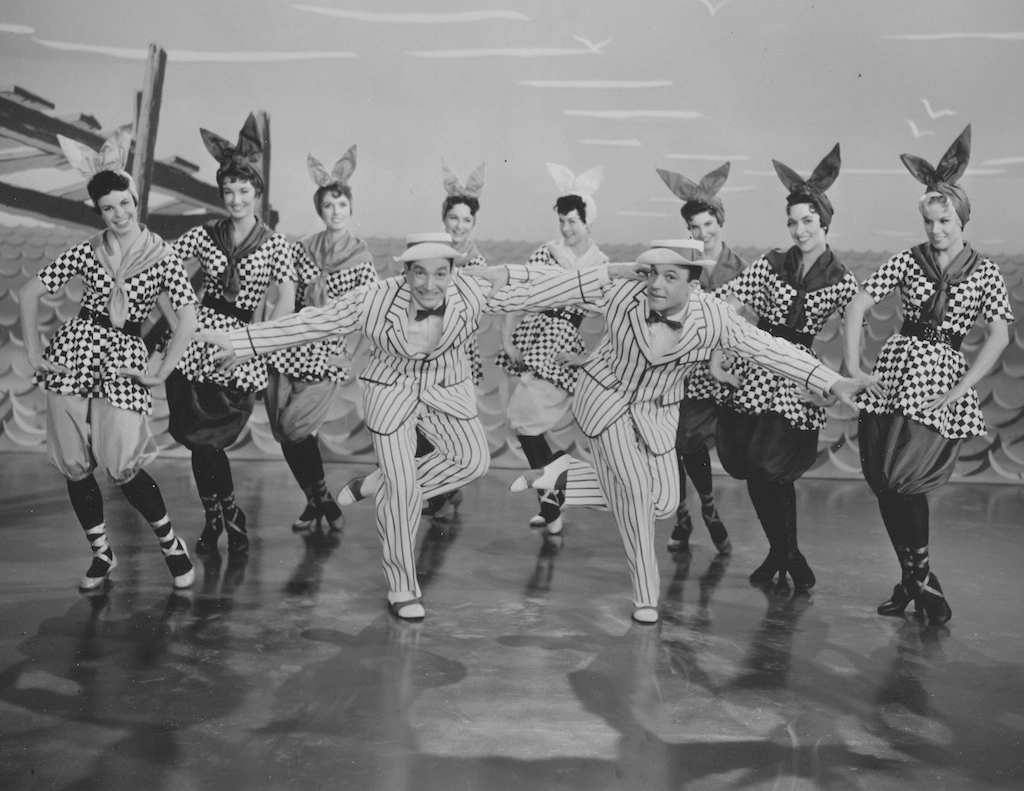

Several of you asked about Gene's younger brother Fred. They only danced together in the movies once—in Deep in My Heart (1954), a movie about the American composer Sigmund Romberg. They performed "I Love to Go Swimmin' With Wimmin." When they were younger, Gene and Fred performed together in amateur nights in and around Pittsburgh. Trained as gymnasts, they were able to do remarkable acrobatic things, including kip ups on roller skates. They wore plus fours and had matching slicked back dark hair. Audiences loved them and they often won the top prizes, unless, as Gene said, there was an Italian accordion player who came with his own claque. Unlike Gene, Fred did not make it in the movies. In person, he and Gene had very different personalities. Fred loved to be on. Gene didn't. The women in this are: Sue Casey, Mary Ellen Gleason, Peggy Gordon, Jean Harrison, Joan Larkin, Joan McKellen, Betty Scott, and Barrie Chase is at the far right.
A Bevy of Beauties!

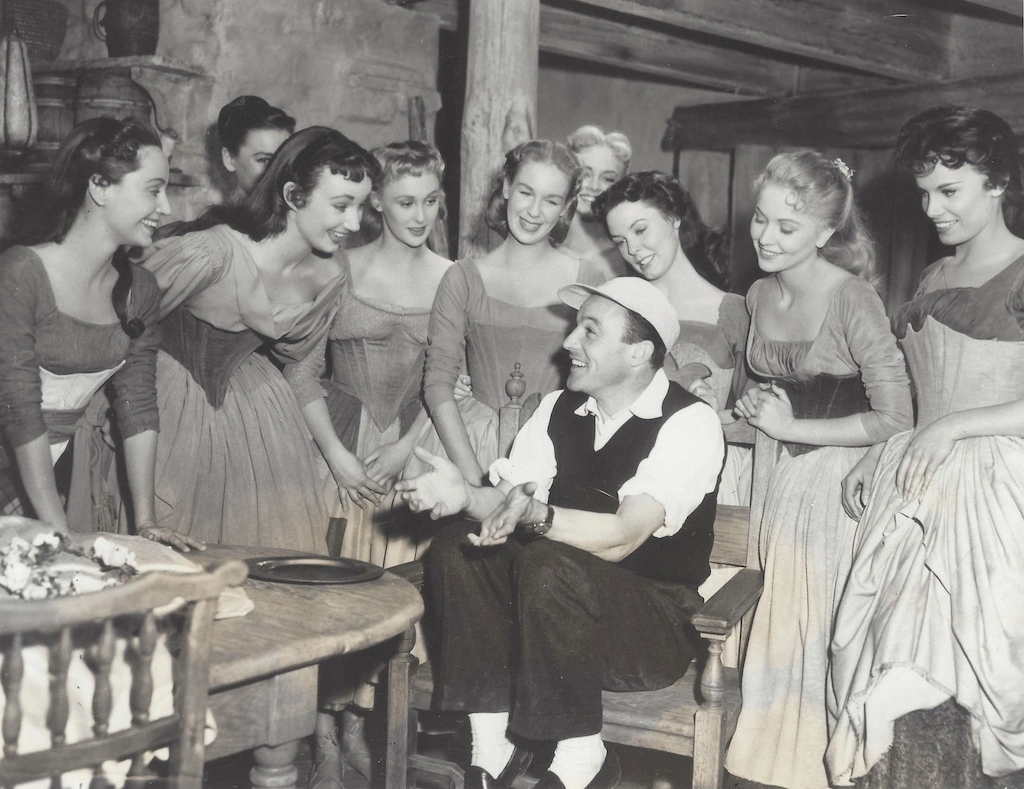

The snipe on the back of this photo describe it as Gene and a "bevy of beauties" with their "boss," since he is both actor and choreographer in Brigadoon (1954). He was a charmer, as you can see in this. He knew how to put people at ease, especially for awkward things like a still publicity photo. Notice his hands, again. Never static. The snipe also says, "Kelly figures 'Brigadoon' gives him a total of 77 dance numbers in 18 pictures since he arrived in Hollywood in 1943 [actually 1942]. Figuring an average of six weeks rehearsing for each, that adds up to two years and one month of dancing." IMDb identifies six of the women (I believe from right to left) as: Barrie Chase, Jane Fischer, Joan Larkin, Dolores Starr, Gloria Stone, and Dee Turnell. Barrie Chase, born in New York City in 1933, is the only one still with us. I met her several years ago. She's lovely, as you would expect. p.s. I realize I'm biased, but I would include Gene among the bevy!
An Umbrella and a Smile!

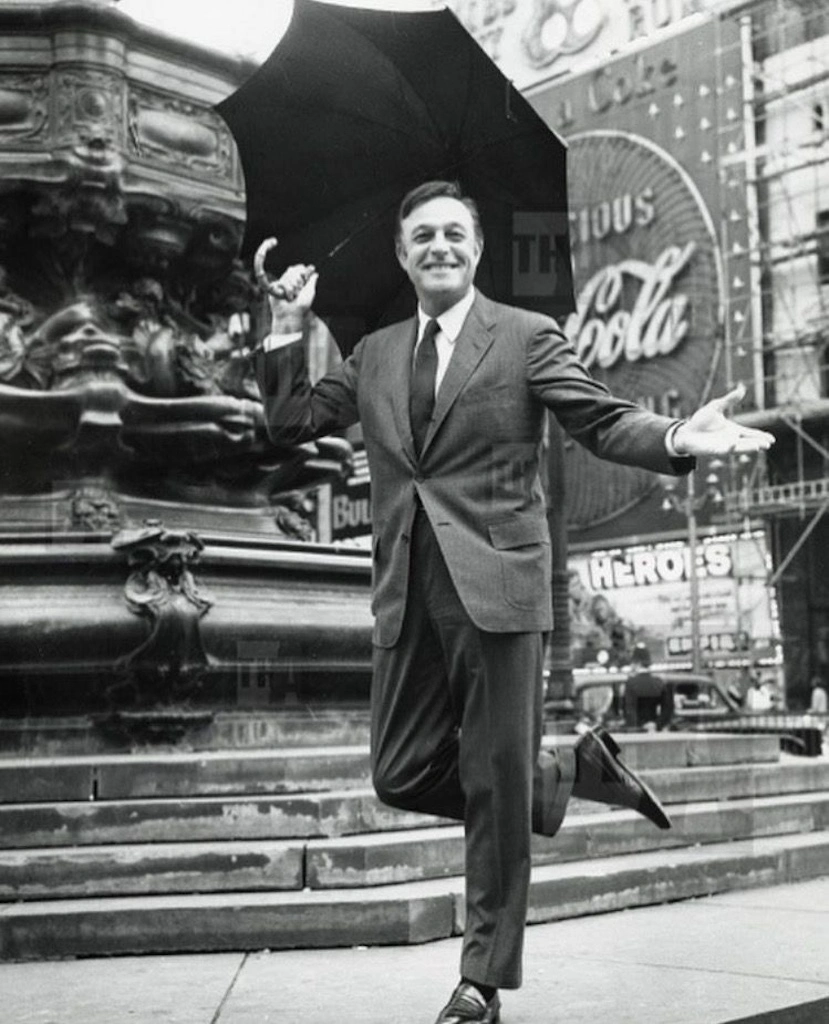

Sometimes you only need an umbrella and a smile! Gene in Piccadilly Circus, London.